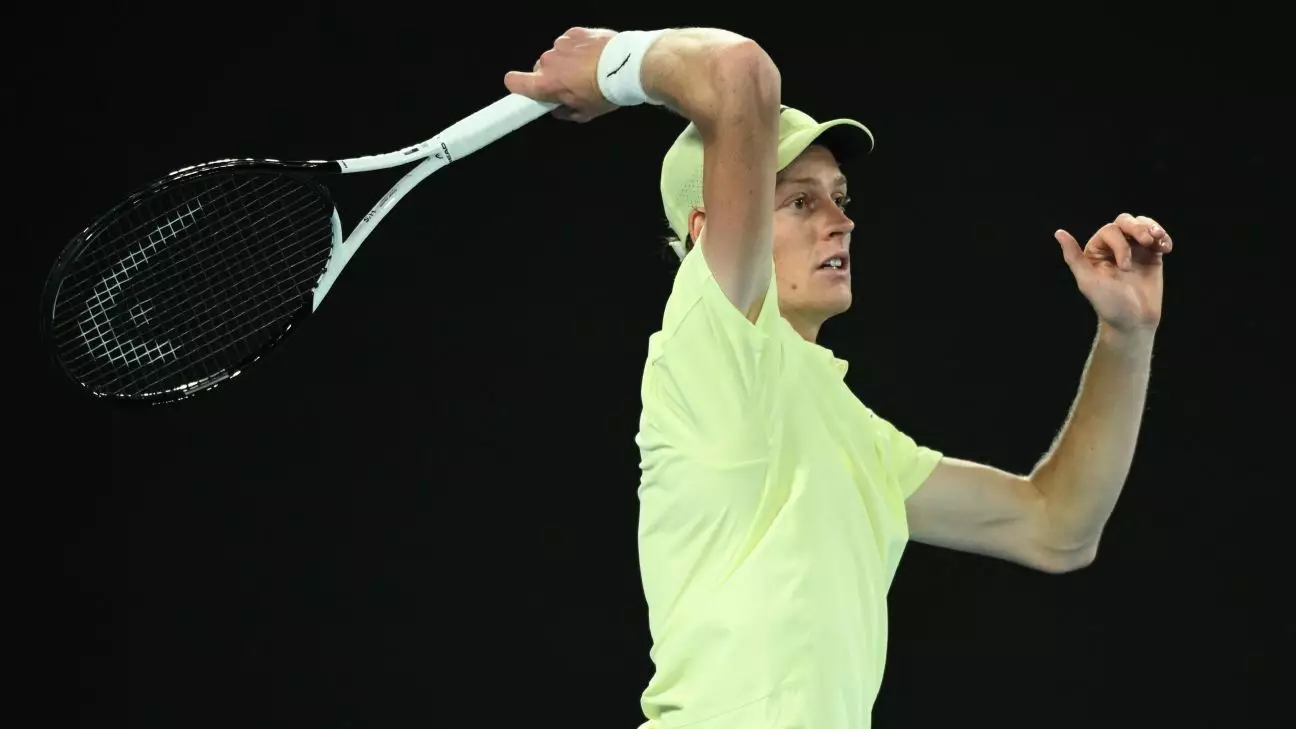In the world of professional sports, a doping scandal can shake an athlete’s reputation to its core. Such has been the case for Jannik Sinner, a young talent from Italy, who recently faced a three-month suspension after testing positive for clostebol. The substance, an anabolic steroid, was unwittingly introduced into his system through massages provided by his physiotherapist. This revelation compelled many athletes to scrutinize their routines, dietary supplements, and medical advice, igniting an ongoing dialogue about the integrity of the sport and the challenges that players now face.
The fallout from Sinner’s case emphasizes an alarming trend: the potential for athletes to be sidelined by accidental contamination. Compounding the issue is the reality that negative test results can tarnish careers, forcing players to seek guidance from anti-doping authorities like the International Tennis Integrity Agency (ITIA). Following Sinner’s suspension, a surge of inquiries from players looking for supportive measures flooded the ITIA. They are stepping up to ensure that players understand the resources available to prevent future incidents—an endeavor that reveals both the vulnerability of athletes and the necessity of transparent regulations in sports.
A Double Standard? The Reaction of Peers
The tennis community has not been entirely united in its response to Sinner’s suspension, with voices of dissent echoing throughout. Some significant figures, including Novak Djokovic and Nick Kyrgios, have openly questioned the fairness of the handling of Sinner’s case. Djokovic expressed disappointment about the perceived opacity surrounding the situation, voicing the concern that elite players might receive leniency based on their prominence. Such sentiments point to a broader issue of equity in sports where the scales of justice may tip favorably for the well-connected.
Nick Kyrgios went a step further, describing the handling of the scandal as “disgusting,” implying a disparity in how different players are treated by regulatory bodies. The frustration expressed by these prominent athletes raises a critical question: Are the rules applied uniformly, regardless of the star power involved? While the ITIA stands firm in its stance that infractions are managed based solely on the underlying facts, skepticism remains palpable, particularly from those who perceive a bias towards high-ranking players.
Resilience in Adversity: Sinner’s Journey Ahead
Despite the storm surrounding his name, Jannik Sinner has demonstrated remarkable resilience. Following his sanction, he secured victory at the US Open and retained his title at the Australian Open. These accomplishments reflect not only his talent but also a determination to catalyze his career even in the face of adversity. As he prepares to return to competition in Rome, anticipation surrounds his performance. Will he rise above the scandal or will the shadow of his past indiscretions linger in the minds of fans and fellow players?
Sinner himself has acknowledged the difficulty of re-entering the competition, preparing mentally and physically for the challenges that lie ahead. He remarked on the complexity of returning to a rhythm after such a tumultuous period, making it clear that the path to redemption is fraught with challenges—both internal and external. His forthcoming matches will undoubtedly serve as a litmus test, revealing his mental fortitude and ability to compartmentalize personal setbacks while focusing on the sport that defines him.
The Bigger Picture of Doping in Sports
The conversation around doping transcends the realm of tennis; it speaks to a larger narrative concerning the integrity of competitive sports. Incidents like Sinner’s serve as pivotal moments that provoke discussions around effective policies, athlete education, and prevention strategies against unintentional doping. It is critical for governing bodies to implement robust educational protocols that not only educate athletes about substances but also prioritize their mental health amidst the turmoil of public scrutiny.
Moreover, this saga emphasizes the essential need for comprehensive and rigorous testing practices. It underscores the responsibility of players to remain vigilant, not just in their nutritional and health choices, but also in ensuring that their support teams adhere to best practices. With doping regulations constantly evolving, the role of each athlete in safeguarding their own career becomes paramount.
Ultimately, Sinner’s experience epitomizes the precarious balance between ambition and ethics in sports. As he embarks on his journey of redemption, other players who meticulously analyze their own paths will undoubtedly take note—heightening both vigilance and accountability within the sport. The narrative surrounding doping must evolve from being reactive to proactive, fortifying the foundation upon which sportsmanship is built.


Leave a Reply